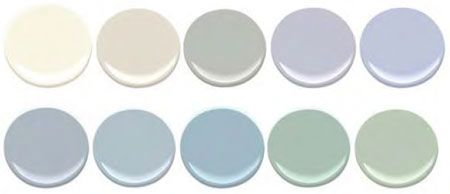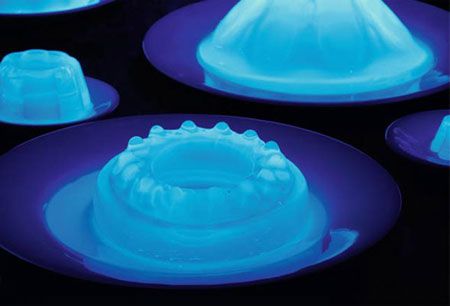Fear-Free: What you see is not what the cat or dog gets
Architect Heather Lewis is working with veterinary experts to figure out what colors could help calm canines and felines in a veterinary practice.
Are your paint choices in your veterinary practice agitating your patients? Another step towards lower-stress veterinary visits might be the color of your walls. That's what Heather Lewis, AIA, NCARB, of Animal Arts in Boulder, Colorado, thinks. She's working on lighting and colors as part of a larger working document of low-stress hospital design guidelines. Which colors could be Fear-Free? Here is a sneak peek of her palette for both dogs and cats below:

The Fear-Free color palette.

The Fear-Free colors shown on an exam room wall.
A dog's eye view
A common misconception among pet owners is that dogs are colorblind. In reality, dogs have dichromatic vision and can see most of the range of colors humans can see. Though they can't distinguish colors in the 510 to 590 nanometers, or wavelengths, range-between green to orange. Other key functions in canine vision include seeing better in low light than humans can, and being able to see into the ultraviolet UVB spectrum.

This JELL-O fluoresces, as an example of what the fluorescence would appear to look like to pets.
The ability to see the UVB spectrum is interesting because it means that some materials appear to fluoresce to dogs, including organic material like urine that contains phosphorous as well as bright white, manmade materials such as paper, plastic and white fabrics, Lewis says. Because these white items are more visually jarring to dogs, their use should be avoided. Your professional-looking white doctor's coat could be lighting up like a christmas tree to your patients.
Lewis warns that in some cases you can't go too dark though. Dark colors in enclosures aren't recommended where dogs stay overnight, because they can see well in low light, and dark colors make it harder to see and comprehend their surroundings.
The feline view
Feline color perception is different than dogs but does have similar characteristics. Cat's vision is trichromatic, but they can't see colors with as much precision as humans do. They also discern the blue and violet end of the spectrum better than the red end, Lewis says.
Like dogs, cats can also see into the UVB spectrum and in low-light situations, so avoidance of manmade objects that are bright white-and using lighter colors in darker areas-makes cats feel more at ease.
Using information about vision and color preferences in dogs and cats, Lewis and folks working on low-stress and Fear-Free hospital design strategies developed this color palette to be visually comfortable and positively perceived. Variations of these hues can be used to allow for changes in style and changing culture, but generally the colors used should employ hues in the soft yellow to violet range, avoiding oranges and reds. For simplicity, the same colors have been designated for use with both dogs and cats.